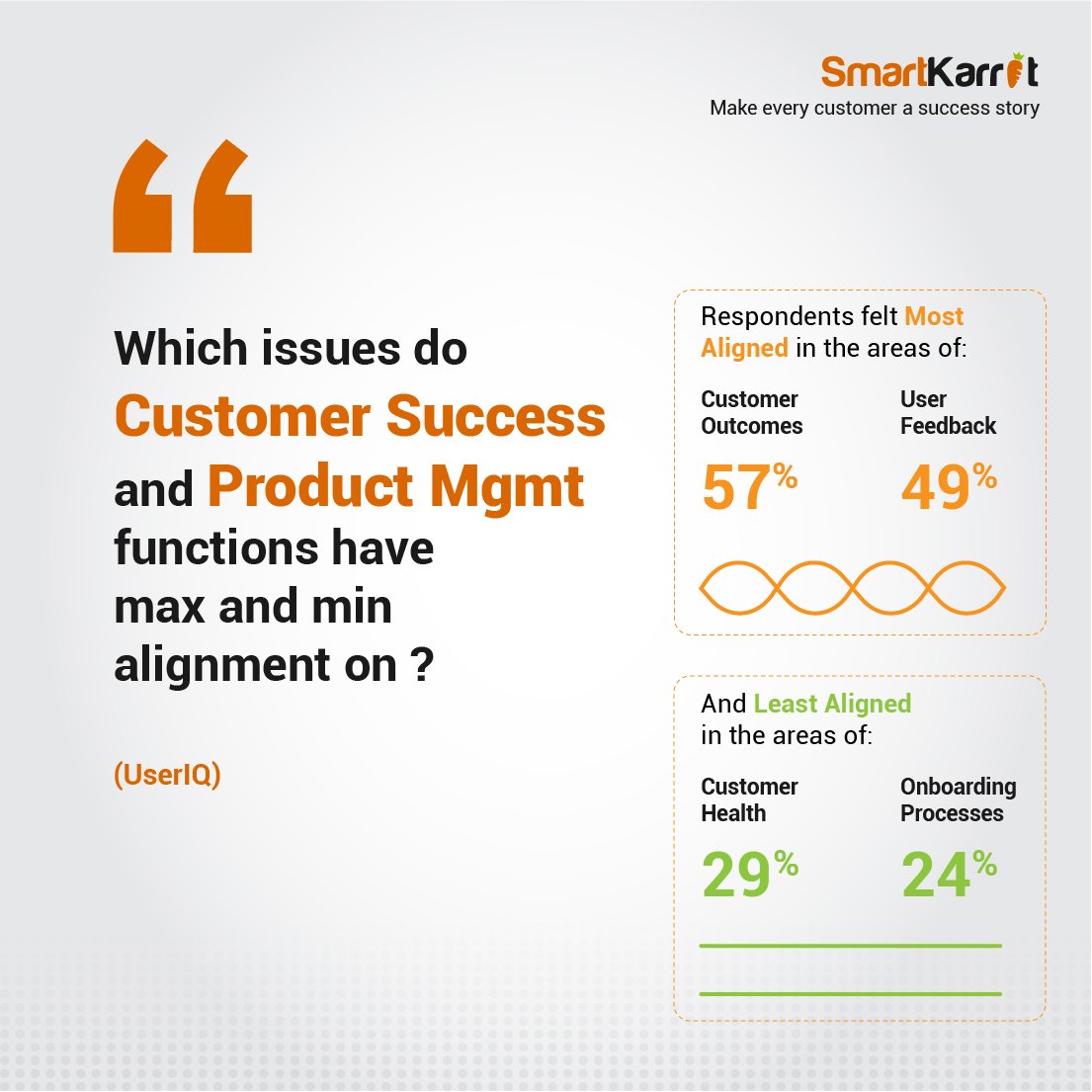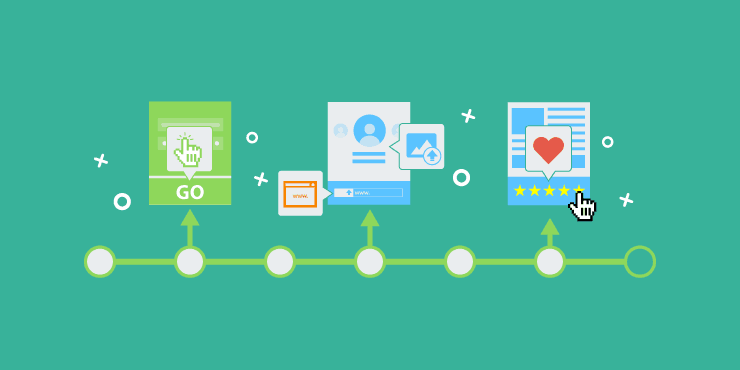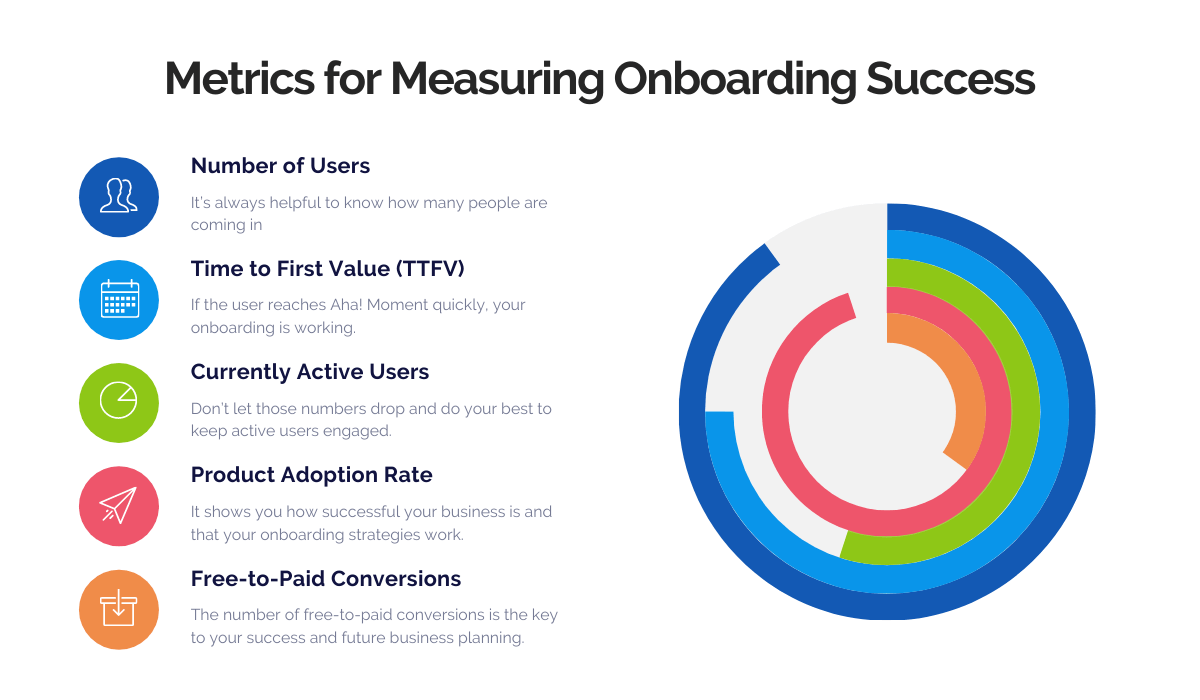Did you know that most SaaS apps lose as many as 95% of their new customers within the first 90 days? As insane as it may sound, that’s quite a lot of money left on the table!
Though a certain percentage of churn is unavoidable, poor onboarding experience has been noted as a primary reason for poor customer retention rates. User onboarding is actually the first impression that brands create in front of their customers.
An excellent first impression sets the stage for satisfied and loyal customers. As such, product managers and growth marketers must consider user onboarding while designing the product and its USP. Here, we will look at everything you need to know about user onboarding and how to make it an integral part of introducing your product or services.
Why Should Businesses Focus on User Onboarding?
Businesses lose several customers between the sign-up process, activation, and habitual adoption. This churn results from the unclear value proposition, which makes it harder for the customer to understand whether or not the product addresses their pain point.
User onboarding acts as a bridge between brands and customers. An effective user onboarding process helps customers understand the product’s features and discover the value proposition thoroughly.
Given this role, the importance of user onboarding becomes clear – to drive customer retention. And this retention is not limited to the initial days of product adoption but, in fact, extends to the natural end of the customer lifetime! It also ropes in a few other benefits, which can be summarized as below:
- Establishing peak customer engagement as they embark on the journey of value discovery.
- Minimizing the learning curve associated with the product or service.
- Building and maintaining momentum keeps the customer on the lookout for value.
- Fostering close relationships with the customer to cultivate loyalty.
- Creating a customer-centric ecosystem that values their experience.
And so, a great onboarding experience is key to transforming an activated customer into a dedicated advocate!
How to Make Product Onboarding User-Friendly?
Easy onboarding means easy usability. However, strategizing this experience requires thorough planning and a lot of data to delight users at every touchpoint. That being said, you can eliminate much of the guesswork by following these five simple steps to make user onboarding customer-friendly.
Understand the Product Onboarding Process
Naturally, the first stage of building a rewarding onboarding journey starts with understanding it in the first place. For SaaS products, the user onboarding process typically contains the following steps:
- Hand-off: where the sales-to-service hand-off takes place after the user purchases the product.
- Kick-off: where the customer inputs are collected to set expectations and to establish goals and milestones depending on their requirements.
- Solution: where the onboarding team dives into the product features and specifications related to the business and how they can be implemented.
- Account Setup: where customers can configure their account and explore the various modules.
- Training: where the user(s) are subject to guided training to derive maximum value from the product from day one.
- Testing: where testing takes place at both ends to check the functionality of the operations and the outcomes.
- Going Live: where the product becomes available for regular use.
Tailor this process depending on your product and customer requirements. For instance, if you cater to the B2C segment, you can completely forego the training part as it is more suited for B2B businesses. Similarly, make the necessary changes to optimize your product onboarding roadmap. At MoEngage, we have looked at the typical onboarding/migration process of 1000+ customers and built this timeline based on that. Check out more details in the Buyer’s Guide For Enterprise Solutions.
Identify the Critical Action Points
After working out the basic skeleton of your user onboarding process, it is time to flesh it out with actions.
As stated previously, onboarding is the journey from the point where the user first signs up until they discover its value proposition and usability. This point in the customer journey is known as the ‘aha moment.’ While you can have more than one aha moment in the user journey, the first plays a critical role in clinching product adoption and nudging the user along the path of discovery.
Critical action points are the enablers at the relevant touchpoints to facilitate user action to trigger results. Critical actions, positive or negative, occur within your product every day. As such, you need to review these to determine the onboarding process flow, the impact of critical actions, and the possible breaks. Identify the key actions that result in the user discovering the product’s aha moment and moving forward with the onboarding process.
Build a User Welcome Series
Almost every user expects to be welcomed as they sign up for your product. Now that you have a list of the critical action points, you can go ahead and weave them into an engaging user welcome story.
A welcome series, whether through in-app messages, push notifications, or even emails, acts as the starting point of the customer onboarding journey – you can even call it an aha onboarding experience. You can orchestrate the flow of events to educate the user, guide them towards certain features, or remind them to check in – depending on the desired action. To make the experience rich, painless, and engaging, most businesses deploy rich media content, such as videos, to captivate their audiences.
Test, Measure, and Improve
Finally, building the user onboarding workflow is not a one-time activity. In fact, once you have a system in place, use it to collect quantitative and qualitative data to find ways to streamline the onboarding process. Use the data-driven insights to optimize paths and reduce friction as much as possible. Keep a close watch on metrics, such as your churn rate, to determine the efficacy of the onboarding process. Augment this strategy with a feedback loop created by capturing customer experiences through surveys, interviews, etc. Based on these inputs, you can put your onboarding process on the path to continuous improvement!
Bonus User Onboarding Tips for Product-Led Growth
Here are some actionable tips and best practices that can make onboarding flows even more effective:
Make Sign Up Frictionless
Capture only whatever information is necessary during the signup process and schedule the rest of the data collection activity for the onboarding. Even during the onboarding process, request only the necessary data that will be required for getting the product up and running in minimal time.
Front-Load the Product With Value
When you bake in aha moments in the initial stages of your product, you will notice higher product adoption rates as users will be motivated to use the product and score more wins along the way. This momentum will be enough to help them coast to the end of the onboarding process and stick around longer.
Keep it Simple
While your users may be open to a product tour, it does not mean they are interested in learning about the rich history of your organization! Keep all the instructions and guides concise and to the point. Avoid over-explaining and grant the user the freedom to explore and discover independently.
Personalize Onboarding Journeys
Different customers will have different expectations while using your product. Fulfilling these requirements will sow the seeds of customer retention and improve customer satisfaction. Capture user inputs at the beginning of the onboarding process so you can customize this journey according to their preferences.
Capture Feedback
Keep lines of communication open to capture customer feedback. After all, your customer’s inputs will prove to be instrumental in highlighting trends that can explain the increase or decrease in churn. Ask them what they like or dislike about the onboarding process to offer more value.
Make Onboarding Productive
This tip is particularly useful for longer onboarding cycles. Allow the user to create something useful during the onboarding process such that they can use it the moment onboarding is over. Accomplishing some of the many intended goals of the product will motivate them to learn and use your product more often.
User Onboarding in Action: Examples to Inspire You
Now that you have a detailed understanding of user onboarding, its importance, and how to design one, let us conclude with a couple of examples that can help you start your journey of designing an onboarding experience for product growth.
Calendly
Calendly follows the principle of keeping it simple as it only collects the user’s email address, name, and password during sign-up. Once the user has confirmed their email, they can set up their custom calendar.
Trello
Trello simplifies the onboarding process of sharing a checklist of items after sign-up to enable users to reach their goals faster. Since the customer would have set up a workspace during sign-up, the item is crossed off the checklist, which offers a dopamine hit and pushes them forward.
These examples show that product onboarding is personal to the business and its approach. So, find what works for you and work on improving it.








![[Research Round-Up] New Study Shows the Continuing Value of B2B Thought Leadership](https://customerthink.com/wp-content/uploads/development-2010010_1280-pixabay-innovation-ideas-think-1-218x150.jpg)